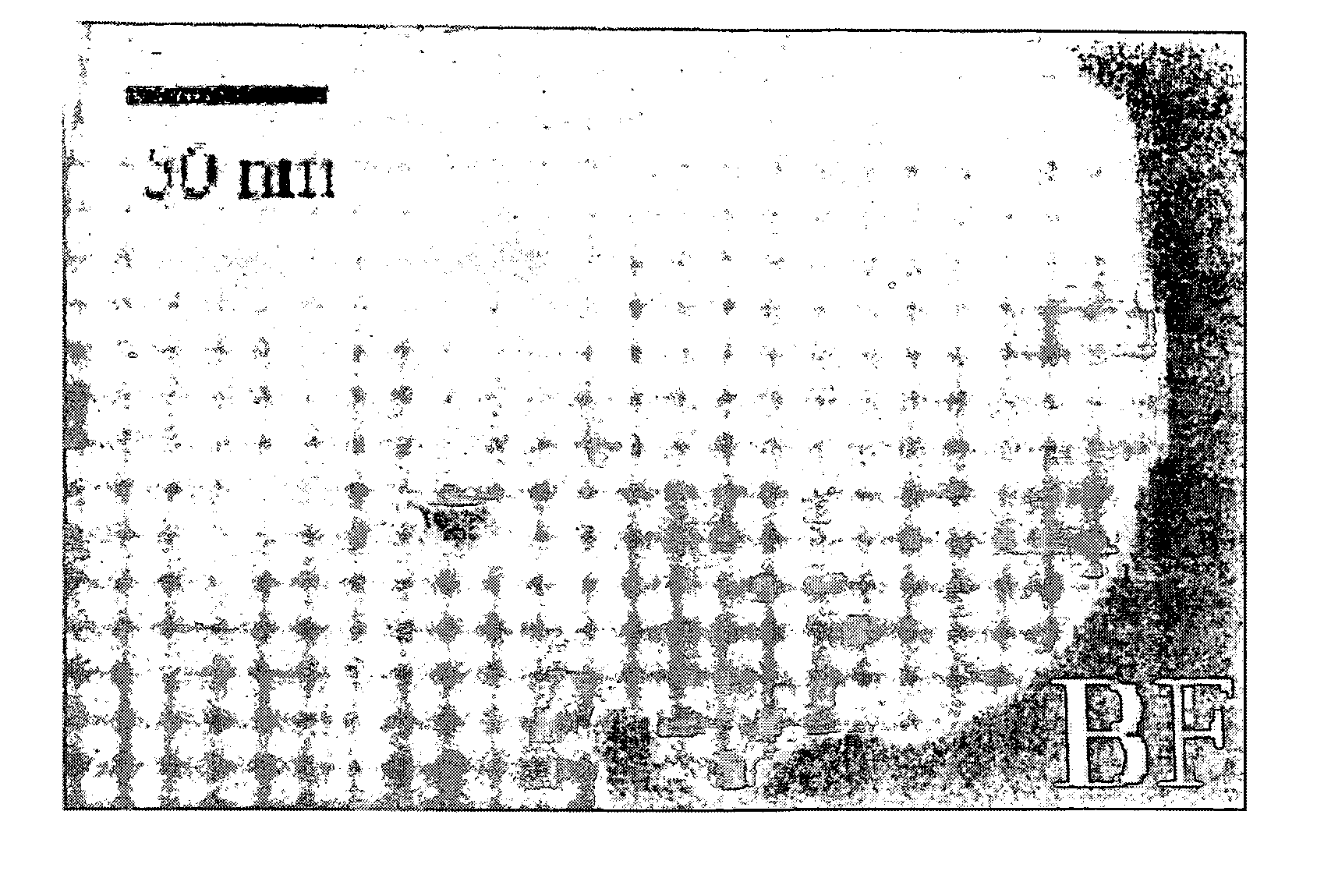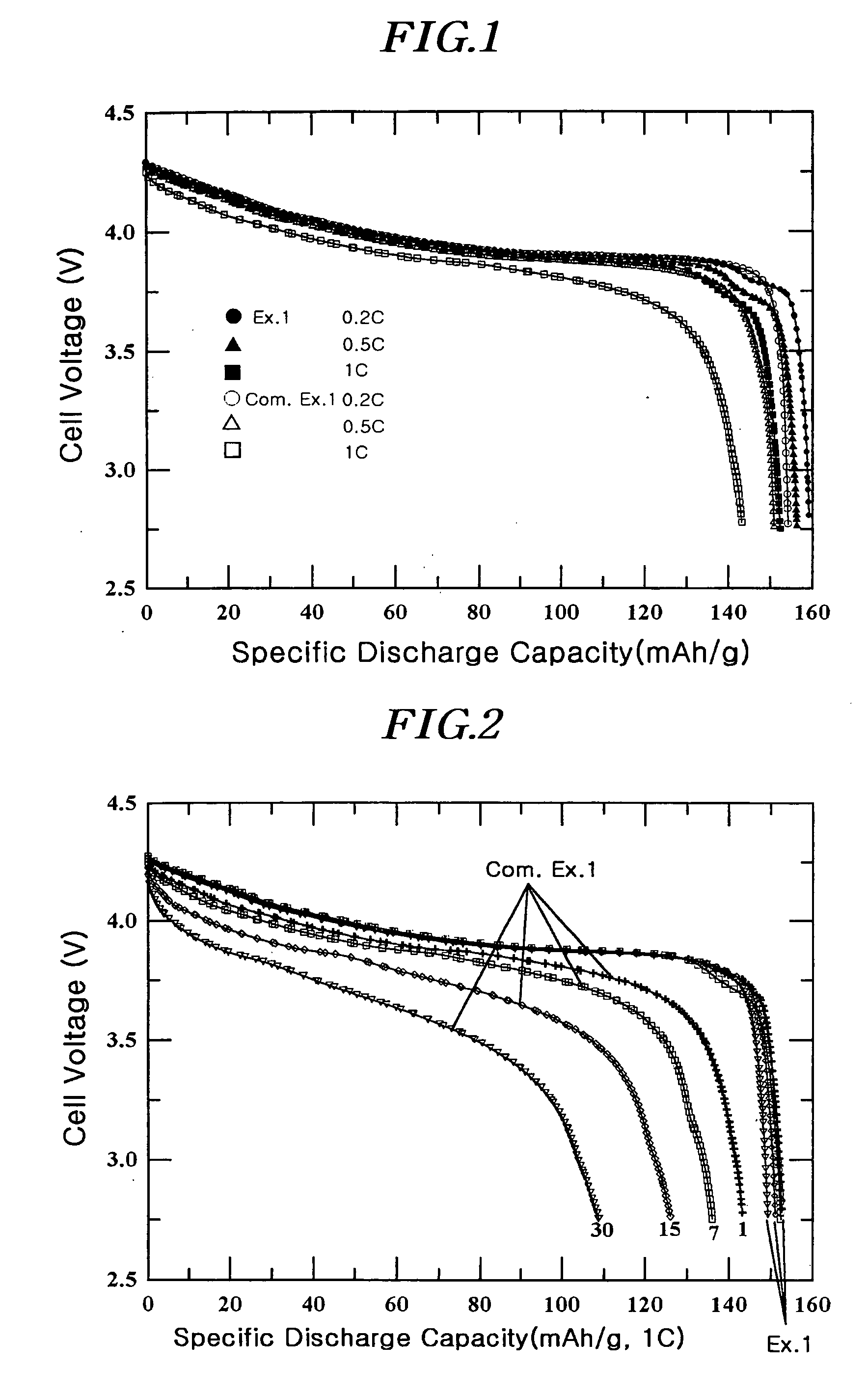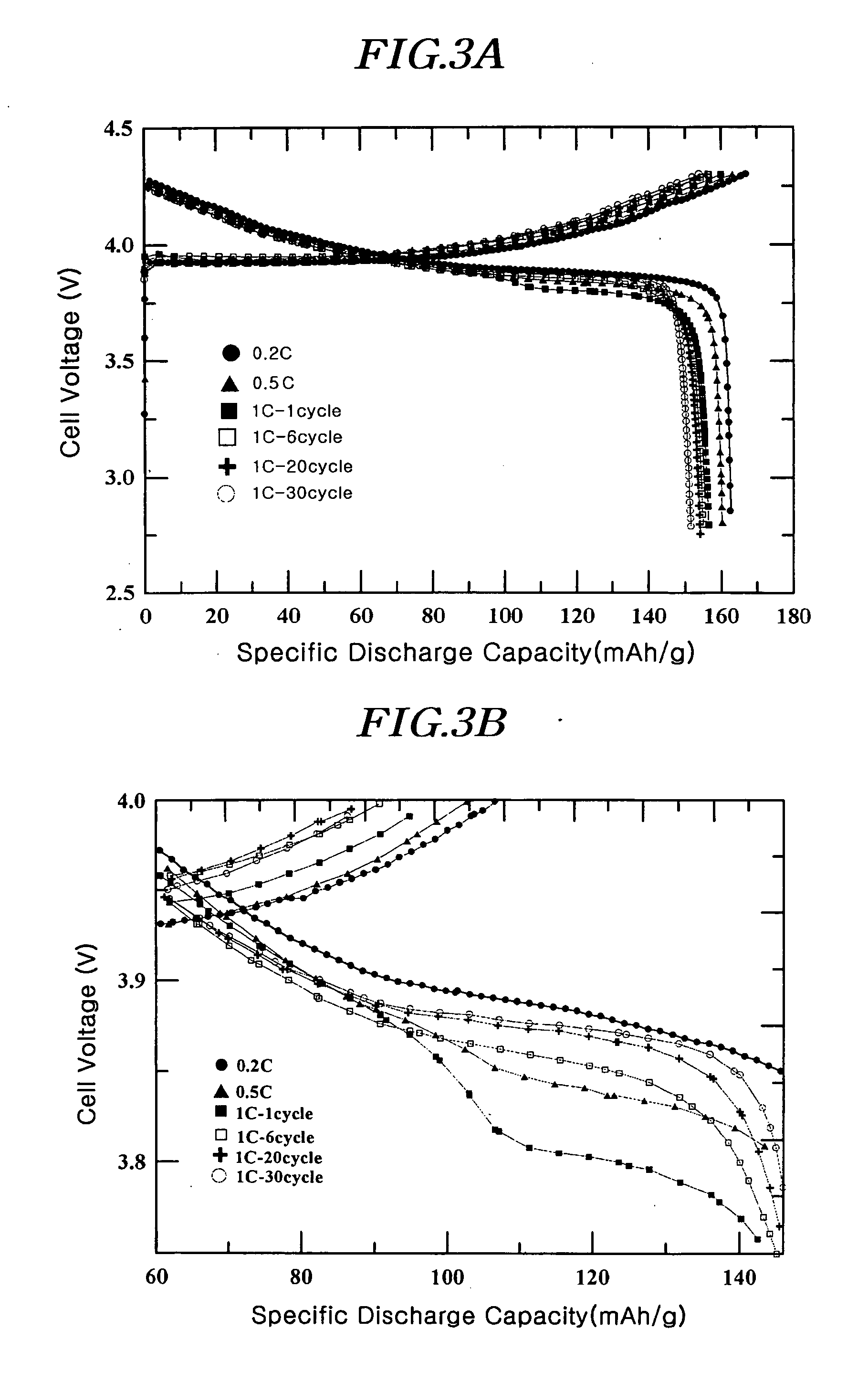Active material for battery and battery having the same
a technology of active materials and batteries, applied in the direction of cell components, electrochemical generators, nickel accumulators, etc., can solve the problems of difficult to ensure the safety of batteries, low capacity of manganese-based materials, and relatively high cost, and achieve good electrochemical characteristics
- Summary
- Abstract
- Description
- Claims
- Application Information
AI Technical Summary
Benefits of technology
Problems solved by technology
Method used
Image
Examples
example 1
[0088] A coating liquid was prepared by adding 1 g of (NH4)2HPO4 and 1.5 g of aluminum nitrate (Al(NO3)3.9H2O) to 100 ml of water. The resulting liquid was a homogeneous colloidal suspension of amorphous AlPOk phase. After adding a 10 ml portion of the coating liquid to 20 g of LiCoO2 powder having an average particle diameter of 10 μm, it was thoroughly mixed before drying at 130° C. for 30 minutes. The positive active material with the coating layer comprising a solid-solution compound including Al and P and the AIPOk compound on the surface was further heat-treated at 400° C. for 5 hours to obtain the desired coating. The total amount of Al and P was 1% by weight of the total active material weight.
[0089] The slurry for the positive electrode containing the positive active material as described, super P (conductive agent), and polyvinylidene fluoride (binder) in the weight ratio of 94 / 3 / 3 was prepared by mixing them thoroughly in an N-methyl pyrrolidone (NMP) solvent. The slurry...
example 2
[0090] A coin-typed half-cell was prepared by the same method as in Example 1, except that a 15 ml portion of the coating liquid of Example 1 was added to 20 g of LiCoO2 with an average particle diameter of 10 μm. The total amount of Al and P was 1.5% by weight of the total active material weight.
example 3
[0091] A coin-typed half-cell was prepared by the same method as in Example 1, except that a 20 ml portion of the coating liquid of Example 1 was added to 20 g of LiCoO2 with an average particle diameter of 10 μm. The total amount of Al and P was 2% by weight of the total active material weight.
PUM
| Property | Measurement | Unit |
|---|---|---|
| thickness | aaaaa | aaaaa |
| tap density | aaaaa | aaaaa |
| voltage | aaaaa | aaaaa |
Abstract
Description
Claims
Application Information
 Login to View More
Login to View More - R&D
- Intellectual Property
- Life Sciences
- Materials
- Tech Scout
- Unparalleled Data Quality
- Higher Quality Content
- 60% Fewer Hallucinations
Browse by: Latest US Patents, China's latest patents, Technical Efficacy Thesaurus, Application Domain, Technology Topic, Popular Technical Reports.
© 2025 PatSnap. All rights reserved.Legal|Privacy policy|Modern Slavery Act Transparency Statement|Sitemap|About US| Contact US: help@patsnap.com



